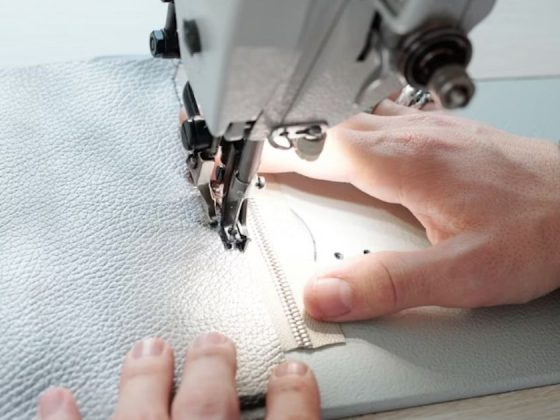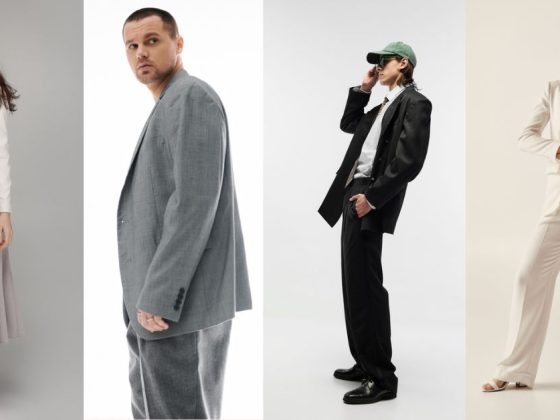Sustainability in fashion is often framed as a personal choice—buying vintage, supporting eco-friendly brands, or repairing rather than replacing. But what happens when sustainability itself becomes a destination? Enter the travelling pop-up sustainable fashion village, a roaming hub that brings ethical design, community learning, and cultural celebration to different cities around the world.
These villages are more than temporary retail setups. They’re designed like miniature eco-festivals, blending markets, workshops, and performances into a cohesive experience. For a weekend or a week, a public square, a park, or even a vacant warehouse is transformed into a vibrant neighbourhood where every stall, stage, and space champions sustainable living.
What Makes the Village Different?
Unlike traditional fashion pop-ups that focus solely on sales, these villages prioritise engagement over consumption. Visitors don’t just browse racks—they discover stories. A jacket might come from repurposed textiles dyed with natural pigments; a pair of earrings may have been crafted from discarded metals. Every item tells of resourcefulness and resilience, making the act of shopping more mindful than transactional.
The design of the village itself also reflects its values: modular stalls built from reclaimed wood, signage made with biodegradable materials, and zero-waste food vendors that serve meals in compostable or reusable containers. Even the energy that powers the village often comes from renewable sources, like portable solar panels.
Beyond Shopping: An Immersive Learning Space
The sustainable fashion village thrives on participation. Workshops and demonstrations allow visitors to try their hand at natural dyeing, upcycling old garments, or even experimenting with 3D-printed accessories made from recycled plastic. Repair cafés encourage guests to bring worn-out clothes and learn the art of mending, turning once-discarded pieces into wardrobe staples again.
Interactive talks and panels dive into big-picture issues—like the carbon footprint of fast fashion, the rise of digital fashion, or the cultural value of handicraft. In this way, the village becomes a classroom without walls, planting seeds of awareness that last long after the tents are packed up.
A Travelling Festival of Culture
What makes the sustainable fashion village so magnetic is its ability to feel less like a marketplace and more like a festival of culture on the move. Food, music, and art are woven seamlessly into the experience, ensuring that sustainability feels joyful rather than preachy. Visitors might wander from a workshop on upcycling denim straight into a courtyard where local chefs are serving plant-based street food, seasonal meals sourced from nearby farms, and fair-trade coffee poured into reusable cups. Each bite becomes a reminder that conscious consumption extends beyond the closet.
Music provides the heartbeat of the village. Emerging bands, spoken-word poets, and dance collectives bring energy to the stage, often highlighting themes of identity, heritage, or climate awareness. Between acts, smaller acoustic sessions pop up in corners, turning the space into a series of interconnected performances.
Why the Travelling Model Works
Mobility is part of the magic. By moving from city to city, the pop-up village spreads sustainable ideas across borders and communities. Each location also allows for local customisation—spotlighting regional artisans, indigenous textile practices, and cultural expressions of sustainability. This makes every stop unique while reinforcing the global nature of the movement.
Travelling also ensures accessibility. Not everyone can visit a flagship sustainable boutique or attend a major fashion summit, but a local park transformed into a fashion village invites broader participation. It democratises sustainable fashion, putting it in the path of everyday people rather than niche circles.
A Glimpse Into the Future
The travelling sustainable fashion village offers more than a novel shopping experience—it foreshadows a possible future where retail, culture, and responsibility are inseparable. Instead of viewing shopping as a solitary or transactional act, these villages suggest a model where buying clothes feels more like participating in a cultural gathering or community ritual.
If scaled into international circuits, the villages could become as anticipated as global music festivals—anchoring urban calendars in cities from São Paulo to Seoul. Each stop would reflect the local culture while reinforcing universal values of sustainability: repair stations at every corner, clothing swap hubs that rival vintage boutiques, and showcases of designers pioneering zero-waste, circular, or carbon-neutral practices.
The ripple effects could be transformative. Retailers may begin adopting repair cafés as standard in brick-and-mortar stores. Clothing libraries and rental systems could shift from niche experiments to mainstream offerings. Even the aesthetics of shopping districts might evolve, replacing sterile glass storefronts with dynamic, festival-like environments that encourage connection and creativity.
In this imagined future, the village doesn’t just move from city to city—it reshapes the expectations of fashion itself. Garments would no longer be measured solely by price or trend but by their story, longevity, and cultural resonance. Shopping could become an act of care, celebration, and shared responsibility, making sustainability not just a choice but the default experience of global fashion culture.
Built to Inspire, Not Just to Sell
Unlike typical pop-ups that prioritise sales volume, the sustainable fashion village is designed to slow people down. Each stall feels like its own world: handwoven scarves dyed with plants, footwear made from pineapple leather, vintage treasures restored with modern flair. Storytelling is at the heart of the marketplace—signage often explains the origin of fabrics, the artisans behind the work, or the carbon footprint saved by choosing recycled materials.
Even the infrastructure mirrors its mission. Stalls are built from reclaimed wood or modular bamboo frameworks. Portable solar panels power lighting. Recycling and composting stations are seamlessly integrated into the village design, making sustainability part of the flow. The village itself becomes an exhibit of sustainable design in action. Stalls and stages are built from modular, reusable materials like bamboo or reclaimed wood, powered by solar panels and low-impact systems.
Pathways weave together swap stations, repair cafés, and artisan booths, turning the layout into a map of circular fashion. Even waste sorting and water collection are built into the design, proving that sustainability can be both practical and beautiful. More than a marketplace, the village acts as a living prototype for circular living, where visitors don’t just shop—they step into an experience of what a sustainable future could look like.
Beyond Shopping: A Living Classroom
What sets these villages apart is their interactive programming. Shopping becomes only one part of the journey. Visitors can:
- Join a repair café to patch jeans, mend shirts, or learn embroidery.
- Experiment with natural dyes using turmeric, indigo, or food scraps.
- Upcycle old garments into entirely new designs under the guidance of local artisans.
- Attend panel talks on everything from indigenous textile traditions to digital fashion’s environmental footprint.
These hands-on sessions transform the pop-up into a school of sustainability, where knowledge is shared as freely as clothing. The goal is not just to sell garments, but to rewire how people think about them.
A Festival for the Senses
The sustainable fashion village is more than a marketplace—it’s a celebration of creativity, culture, and conscious living. Every corner hums with activity, engaging not just the eyes but all the senses. Food trucks line the edges of the space, dishing out plant-based meals, heritage recipes, and regionally sourced specialties served in compostable containers or reusable dishware. Each bite becomes part of the story, reinforcing the message that sustainability can be both ethical and delicious.
The soundtrack of the village is just as intentional. Acoustic musicians strum under strings of lights, spoken word poets command small stages, and DJs—sometimes powered by pedal-bikes—spin beats that keep the energy alive without leaving a heavy carbon footprint. The result is an atmosphere that feels celebratory yet mindful, where art and sound become extensions of the values on display.
Visual art ties it all together. Murals painted with natural pigments, sculptures built from upcycled textiles, and immersive installations crafted from discarded objects turn walkways into open-air galleries. These works are more than decoration; they provoke reflection, sparking conversations about waste, creativity, and possibility.
What makes the village truly magnetic is this festival-like energy. It doesn’t feel like shopping in the conventional sense—it feels like stepping into a cultural event where sustainability is lived, tasted, heard, and felt. Visitors leave not just with garments or accessories, but with a sense of connection, inspiration, and joy. In blending commerce with celebration, the sustainable fashion village proves that responsibility and revelry can share the same stage.
Why the Travelling Model Works
The mobility of the sustainable fashion village is no accident—it’s central to its vision. By moving from place to place, the town ensures that sustainability is never presented as a monolithic idea, but as a living, adaptable concept shaped by local culture. Each stop becomes a showcase of place-based creativity. In Oaxaca, the spotlight might fall on handwoven textiles dyed with cochineal and indigo; practices passed down through generations. In Berlin, the conversation shifts toward experimental silhouettes and avant-garde zero-waste design that challenge traditional forms. In Nairobi, recycled glass and plastic are transformed into vibrant beadwork, proof that waste can be reborn as wearable art.
This constant evolution keeps the experience fresh while celebrating the richness of global traditions and innovations. No two villages are ever quite the same, yet all share the same ethos: fashion that honours both people and planet.
The travelling model also flattens barriers of access. Sustainability often feels like something confined to elite runways, exclusive boutiques, or high-priced capsule collections. By contrast, the pop-up format brings the conversation directly into public spaces—whether it’s an empty warehouse, a community park, or a small-town parking lot. Suddenly, the tools of circular fashion—repair cafés, swap stations, or workshops—are available to anyone who wanders in, not just those who can afford a ticket to fashion week.
Mobility, then, becomes a form of democratisation. It allows sustainability to move from the margins to the mainstream, from gated events to open-air marketplaces where curiosity and community drive participation. And by travelling, the village doesn’t just spread ideas; it gathers them, weaving together global voices into a shared narrative of fashion’s more responsible future.
From Pop-Up to Cultural Phenomenon
At its core, the travelling sustainable fashion village is about movement in both senses: moving from place to place, and moving people toward new ideas. Over time, these pop-ups could become cultural landmarks—as anticipated as music festivals, as socially impactful as farmers’ markets.
Imagine a future where every major city hosts an annual sustainable fashion village, where young designers launch their first collections, communities gather to swap clothes, and global brands test circular business models in real time. These villages could influence mainstream retail by normalising repair stations, clothing libraries, and closed-loop material innovation.














